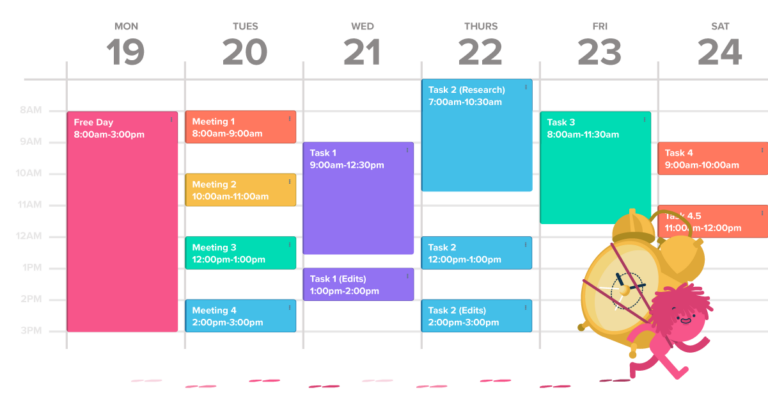Eatwell Guide: Healthy Eating on a National Scale
So what is this Eatwell Guide? Simply put, it’s a special policy used to outline government recommendations on healthy eating. Simply put, it is a science-backed guide that tells you what foods you should eat (and in which quantities) to lead a healthy life.
The Eatwell Guide divides foods into five groups and comes with an easy-to-follow set of recommendations upon which you should loosely base your diet.
Why Do We Need the Eatwell Guide?
It may sound odd that the government would get involved in people’s eating habits, isn’t it? (no, don’t pull out your aluminium hat). With all nutrition misinformation flying around, it’s no wonder the NHS has offered a standardised guide to help you navigate your nutritional needs.
But why do we need it? Quite simple, follow this chart:
there is too much misinformation out there → people may not know who to listen to → they bumble from one diet to another → poor diet can lead to many serious issues → the NHS has more problems on their hands (totally preventable) → the Eatwell Guide is born
Basically, the Eatwell guide functions as a way of taking long-term care of yourself by investing time and effort into your diet.
Who is the Eatwell Guide for?
The beauty of the Eatwell Guide is in its broad application. The guidelines apply to everyone, regardless of their age, weight, or activity levels. As you will see, the Eatwell Guide does not really offer any major caloric suggestions, so you should eat as much as your body needs. The whole idea, however, is in offering a visual representation on how to divide your foods in order to get the most out of your meals.
What’s Up With Social Media Diet Trends?
Let’s talk facts: You go on Instagram, and there’s a person telling you carbs are bad. Their page has a colourful gallery of low-carb recipes and promises many more if you buy this person’s cookbook. Or sign up for their totally inexpensive webinar. Maybe join their coaching class?
Sounds familiar? You may even consider doing this – I mean, it looks like they know what they’re doing. So you look at that webinar only to find out they’re just promoting Keto dieting. Then the next day, you find another equally convincing influencer spitting fire on high-fat diets and arguing about high protein intake.
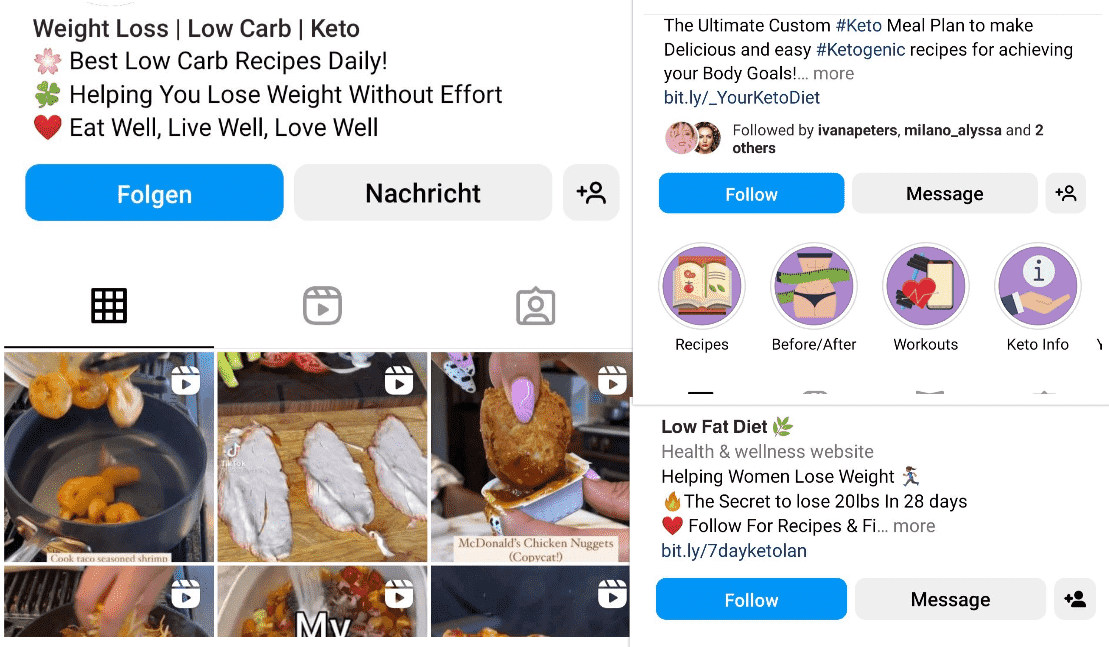
You get the idea – everyone claims they have the solution to magical weight loss, be it low-fat, low-carb, low-everything.
What these people are doing is garnering profits – they are just trying to sell you things! Instead of listening to scammers, it’s better to find personal balance with broad guidelines.
Eatwell Guide: Food Groups
The Eatwell Guide is all about balance, and I am following suit. As I am ideologically opposed to counting calories (as it can lead to obsessive thinking, disordered eating, and eating disorders*), I will not be giving you any exact numbers. The general guideline is around 2000 to 2200 for women and around 2500 for men, with allowances for variations.
The Eatwell Guide also doesn’t bother you with micro and macronutrients – instead, it speaks in plain language with examples. There are five main food groups, which should find their way onto your plate every day.
Covering Bases: The 5 Main Food Groups
Without focusing on micros and macros, the Eatwell Guide goes for this division:
| Food group | Typical foods |
| Proteins | eans, legumes, meat, fish, and any protein-rich meat replacements such as tofu |
| Carbohydrates | potatoes, rice, bread, pasta (ideally multigrain) |
| Fruits and vegetables | apples, pears, peaches, watermelons, cucumbers, cabbage, corn, bell peppers, spinach etc. |
| Dairy and alternatives | milk, cheese, cottage cheese, various dairy-based spreads and their vegan-friendly alternatives |
| Fats | oils and spreads (also cheese, some fatty fish) |
While fruits and veggies technically fall into the carb category, they are metabolised differently, and a different daily intake is recommended. This chart provides the division of food groups based on how much of each you should be eating:

Eatwell Guide: Carbohydrates Are NOT the Enemy
Let’s start with some solid myth-busting. As you can see, the Eatwell Guide is quite unequivocal on this: carbs should comprise around a third (and a bit more) of your daily intake. While carbohydrates include various foods, you should focus on complex ones necessary for your body’s proper functioning.
What do carbs do?
- Give you energy
- Keep you satiated
- Help muscle recovery (like when you bust a good workout)
- Keep you awake and energised for daily activities
Complex carbohydrates are digested more slowly than simple ones, keeping you full and, if you will, sponsoring your daily activities that go beyond sitting and lounging around (though there’s nothing wrong with an occasional lounge).
In case you were not sure, these are you best carb friends:
- potatoes (regular and sweet)
- rice
- whole-grain bread and pasta
- couscous
- oatmeal
Replacing white bread is highly recommended as it is usually harder to digest and not as nutritious (often loaded with sugar or otherwise processed). Similarly, swapping out sweetened packaged cereals for steel-cut oats is more beneficial for your long-term health.
Fruits and Vegetables: Are You Getting Five a Day?
The verdict is clear when it comes to the absolute best friends of any nutrition plan. At least one-third of your daily intake should come from various fruits and veggies. The Eatwell Guide suggests five servings of different produce daily: apples, pears, cabbage, artichoke, tomatoes, peas, corn – whatever you prefer.
As I mentioned already, fruits and veggies are carbs – strictly speaking – but they do not give you as much energy as complex carbohydrates. Their main benefit is the massive load of vitamins and micronutrients you get from them, which are crucial to keeping you healthy.
Make sure to add lots of produce to each meal in the form of salads, side dishes, desserts, and two daily snacks. Just make sure your snacks also come with a source of protein or healthy fat (e.g. apples and some almonds) to keep you full.

Healthy Fats: Oils and Spreads
Cooking with healthy fats is highly recommended, but it may be wiser to keep them on the low end of your daily intake (your cardiovascular system will thank you). Fats can be unsaturated (i.e., monounsaturated and polyunsaturated) and saturated. The former are the ones you should be focusing on.
- Monounsaturated fats can be found in olive, peanut, and canola oil; avocados; almonds; hazelnuts; and pumpkin and sesame seeds.
- Polyunsaturated fats are in high concentration in walnuts, flax seeds, sunflower oil, and fish.
- Saturated fats are prevalent in highly processed foods, including cheese, reduced-fat (the irony) dairy, cookies, sausage, beef, and fast food.
There has been a lot of fats-are-bad mythology around, but the answer is not as straightforward as cutting them out. Fats are, in fact, very healthy in moderation:
- They help digest food
- Reduce blood pressure
- Fats keep cardiovascular disease at bay (this is why the Ketogenic diet gained momentum)
What’s bad is saturated fats combined with sugar – basically, everything you find in store-bought desserts and snacks. As mildly addicted to chocolate chip cookies, I know how hard it can be to pass up a good snack, but it does pay off to learn to bake and prepare your sweets yourself.
Your daily intake of fats should look a bit like this:
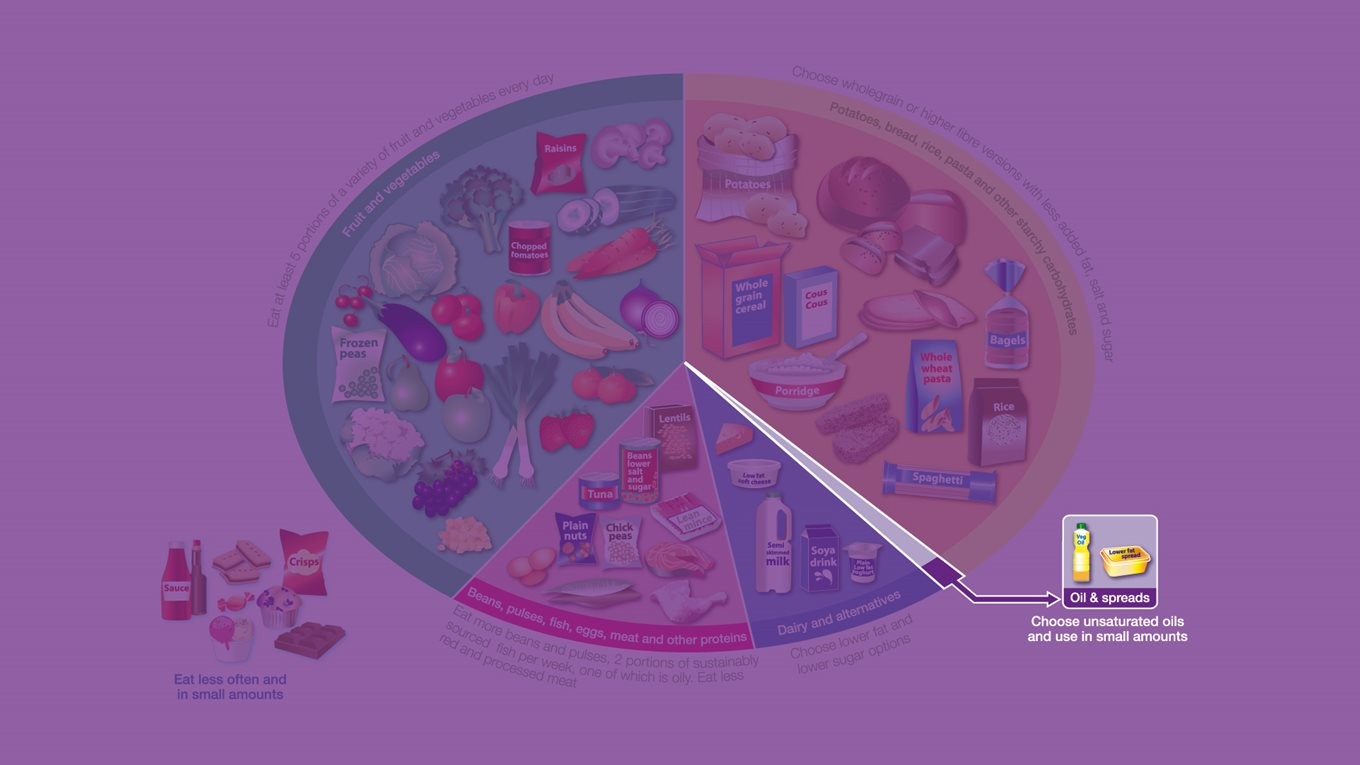
The worst kind of fats is trans fats. This is the type of fat created by heating various oils in a process called hydrogenation. In other words – think of the boiling pot of oil in which fast food restaurants fry their food. Not only are they incredibly unhealthy – to the point of clogging up arteries and causing high cholesterol – but they’re also nutritionally void. Let’s face it; you can eat a whole pack of chips from Mcdonald’s and be hungry in an hour. Instead, it’d be better to bake or air-fry some potatoes and get the most out of your meal.
The Eatwell Guide Dairy Recommendation
When it comes to dairy products, they serve as a good source of protein and, more importantly, calcium which keeps your bones strong and healthy. The Eatwell Guide recommends about 15–20% of dairy intake in the form of milk, cheese, yoghurt, and similar products. If you’re a fan of yoghurt, pick plain varieties rather than sugary fruit ones (there isn’t much real fruit in them anyway).
Let’s Not Forget Protein Intake Recommendations
Protein sources like lean meats (and relevant replacements), fish, and legumes (beans of all kinds) keep you satiated. They are digested slower than carbs and also serve as a good source of energy. The recommended intake is about one gram of protein per kg of body weight. If you wish to build lean muscle, you can up your protein to as much as two grams per kg of body weight, but don’t overdo it.
While serious athletes, bodybuilders, and extremely active exercisers sometimes turn to various protein powders, an average person does not need any supplements to get enough protein throughout the day.
The Mighty Benefits of the Eatwell Guide
If the British Government has decided to put all this effort into creating the Eatwell Guide, it must mean it’s good for something.
The main benefits of the Eatwell Guide are:
- simplicity – it really can’t be easier
- balance
- flexibility and variability – you can switch things around every day
- long-term health orientation
- great starting point for healthy eating
- graphic representation with realistic examples
Besides balance, following the guidelines as recommended promotes healthy bodily functions, wards off various diseases, and avoids extremist eating habits. In addition to some other advice, like eating breakfast every day and drinking enough water, the Eatwell Guide is a good starting point for anyone looking to overhaul their nutrition.
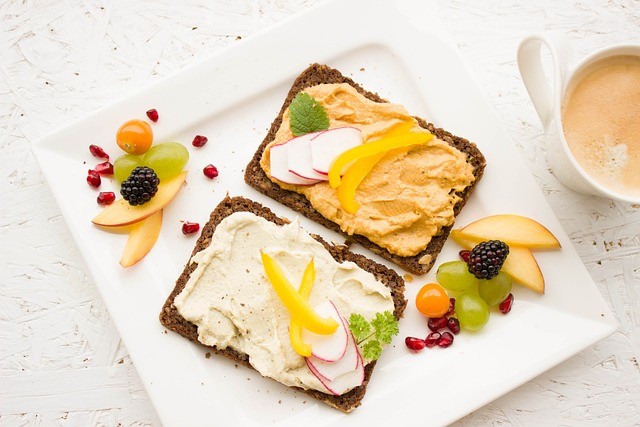
A Thought or Two on Balance
As you get into more detail about the Eatwell guidelines, you’ll notice that they generally do not include sugar in their plan. While it’s true that people can live without sugar or on extremely low amounts of it (if you’re one of those people, I envy you), it may be prudent to take a balanced approach to sweets and desserts too.
Here’s a typical scenario: you decide you want to quit sugar. That’s it. No more, niente! You slog through two days, and on the third, you splurge on every single cookie, chocolate bit, and half a jar of marmalade you found at the back of the fridge. You feel guilty and promise not to eat sugar anymore. So you slog through two days, and on the third … you see where this is going.
So, what happened?
Restrictive Mindset
The problem here lies in the restrictive mindset. As soon as you label any food as bad/off-limits, you may find you want it even more. Yes, you can quit sugar cold turkey, but there will be some withdrawal, and the first week or so may be painful. On the other hand, you can reduce your sugar intake in a balanced way (mental balance included). Instead of demonising it, consider building your meal plan around whole grain, relatively unprocessed foods.
Lack of Nutrients
When we cut sugar out suddenly, we actually deprive our body of a number of calories it is used to. Make sure to eat three meals and two snacks a day, and you may just find you’re craving less sugar anyway. The situation applies to any food group you try to cut out completely. This is why any of those low-carb, low-fat, low-reality diets never work.
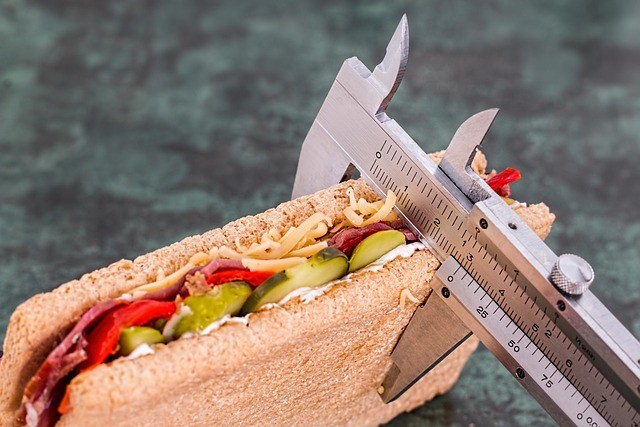
Restrictive eating only leads to binging later.
What Should You Do?
The only way to stave off binge attacks is to keep yourself well-nourished throughout the day. You should aim to have two bigger meals by early afternoon in order to avoid sugar crashes.
Also, work on your mindset – don’t label foods as good or bad, allow yourself to eat everything in moderation, and NEVER skip meals to make up for what you think may have been overeating. Ditch the dieting mindset and focus on your health instead.
How Much Should You Eat?
The Eatwell Guide recommends a daily intake of 2000kcal for women and 2500 for men. These are the common figures backed by science. However, don’t feel saddled by numbers. If you’re hungry – eat. When you’re full, stop (you’ll be hungry later or tomorrow).
If you exercise regularly (which I totally recommend), have a demanding job, or are on the move a lot, you will probably need more energy, so don’t be shy about giving your body what it needs.

Eatwell Guide Summarised
The Eatwell Guide is all about balance. It recommends a solid intake of the five main food groups (proteins, starchy carbs, fruits and vegetables, dairy, and fat) and is geared towards unprocessed foods:
- Starchy carbs, fruits, and veggies should take at least one-third of your daily intake (each).
- Protein lies at around 20% of your daily intake.
- 10% of your intake should be dairy.
- Fats and spreads are healthy but in moderation.
While reshaping your diet, remember that balance is not just nutritional advice but also mental. Don’t restrict or try to ban foods. Listen and trust your body – it knows what it needs! Cheers!





